
Tour Features: Embark on a Black Myth Wukong tour by China Shanxi tour operator, explore the heartland of China and marvels at those most beautiful Chinese temples, pagodas and ancient architectures, which are in the highly anticipated action RPG inspired by Chinese mythology and the classic novel Journey to the West. Immerses the visitors in the “real augmented reality” of Chinese culture, mythology and adventurous tour.
Tour Code: CCT-CTT29
Destinations: Datong, Pingyao, Hongtong, Jixian, Yuncheng
Itinerary:
Day 01 Datong
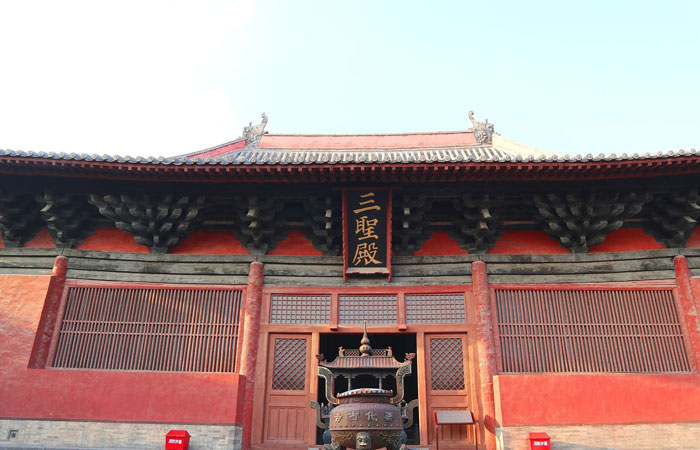
Arrive in Datong in the morning. Meet your guide at the train station and transfer to your hotel for a short refreshment. Then visit Shanhua Temple which was originally built in the Tang Dynasty (618-907). It is the most intact and largest preserved temple of Liao and Jin dynasties in China. Continue to visit the Nine Dragon Screen, by far the most magnificent screens in China. Visit Yungang Grottoes in the afternoon. Yungang Grottoes are known as one of the three major Grottoes in China. It is a treasure trove of Buddhist carvings unrivaled in the world with a variety of more than 51,000 statues. The construction of the caves was started under the auspices of the noted monk Tan Yao in 453 and took 50 years to complete.
Day 02 Datong (B)
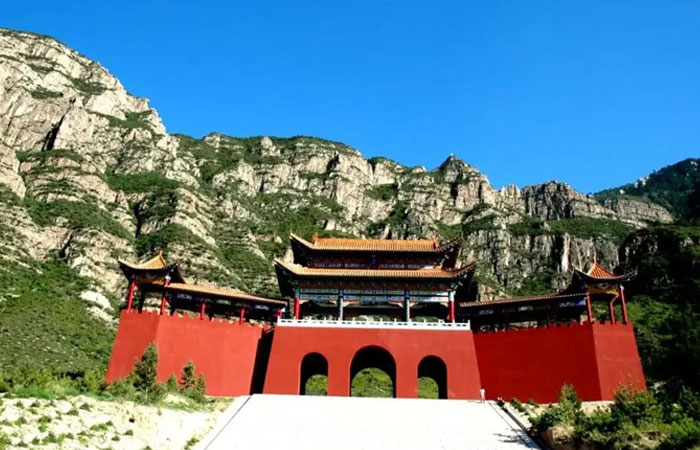
Drive to visit the Hanging Temple standing at the foot of Mt. Hengshan, which was first built at the end of the Northern Wei Dynasty (about the sixth century). Hanging on the west cliff of Jinxia Gorge more than 50 meters above the ground, unique mechanical theory was applied to building this temple. Hanging Temple is the architecture marvel in the world. Then travel to Wooden Pagoda built in 1056AD. It is the oldest wooden structure extant today in China, and also the tallest among ancient wooden buildings of the world. Travel back to Datong and visit the Huayan Monastery which was built 1062AD by Khitans (nomadic Chinese). In contrast to the traditional practice of orienting main buildings to the south, here the main on face the east. It is an artistic complex of architecture, sculpture, frescoes bearing the styles of combining Han and nomadic Chinese. A cultural synthesis of religion and beauty of ancient China is well displayed here.
Day 03 Datong/Pingyao (B)
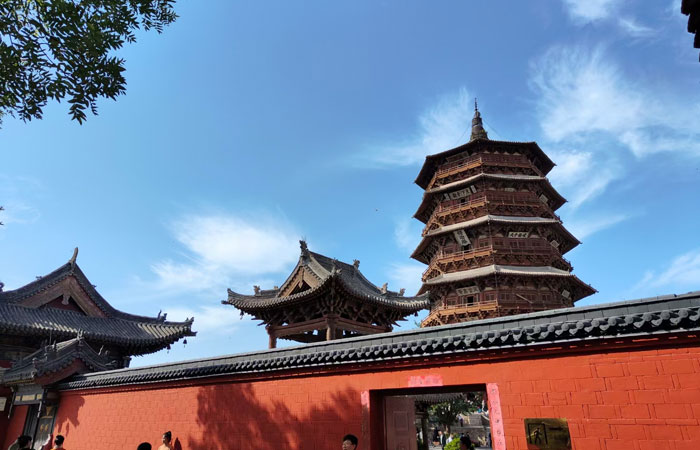
After breakfast travel to the train station and take the high-speed train to Pingyao. Upon arrival, visit Shuanglin Temple founded in 571AD. The temple is famous for 2,000 colored clay statues dated from the 12th century to the 19th century. Transfer to the hotel and enjoy your leisure. Drive to visit Yingxian Wooden Pagoda. It is the oldest wooden structure extant today in China, and also the tallest among ancient wooden buildings of the world. Drive to Pingyao. Stay overnight at Huahui Hotel this evening.
Day 04 Pingyao (B)
Enjoy a full day to explore the ancient town of Pingyao, once ancient financial center in China. It was evaluated as the most outstanding heritage in the world by UNESCO in 1997. Walk on the city walls of Pingyao constructed in 1370. Wander around the streets lined with many 17th –19th century shops and residences and feel the past glory of the city.
Day 05 Pingyao/Hongdong (B)
After breakfast travel to Jiexiu and visit Xianshenlou (Zoroaster Tower in English). This wooden tower was built in 11th AD and is one of the very few remains of Zoroastrianism in China. On the top of the thee-layer flush gable roofs coated with beautiful glazed titles, stand the gods and mythical animals with motifs of acanthus in ancient Persian styles. The architecture style is the combination of ancient Chinese and the western. The exquisite Chinese wood carvings are the masterpieces of Chinese arts. Then travel to the 800-year-old Wang Family Compound (Wajiadayuan in Chinese), the fortress-like courtyard residences in China. The family had accumulated riches from business and trade. Multi generations had endeavored building of the compound and made it the “crown jewel” of northern rural architecture. It is enrolled as in the UNESCO World Heritage Tentative List in 2008. Proceed your travel to Xiaoxitian Temple built about 500 years ago. It is famous for its suspended Buddhism sculptures and colorful paintings at their best-preserved conditions in the main hall.
Day 06 Hongtong/Jixian (B)
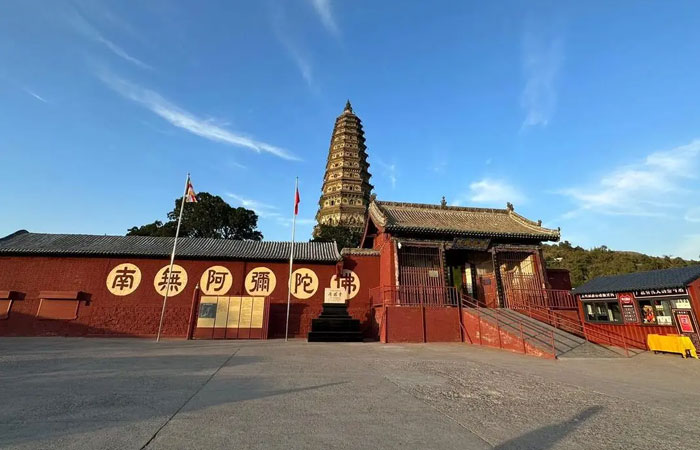
Travel to Guangsheng Temple built 1400 years ago, consisting of the upper monastery and the lower monastery. The "three treasures" of it are the glazed pagoda, the Buddhist sutras and the Buddhism murals. Some of the best murals were trafficked to the States and become the best collections of Metropolitan Museum, Penn Museum and Nelson Atkins Museum of Art. Continue your trip to Hukou Waterfall of the Yellow River. It runs through the narrowest section of the river Valley between Shanxi and Shaanxi provinces. The turbulent water stream pours down and makes for spectacular cascades. It symbolizes Chinese spirit “Keep going and never stop”.
Day 07 Jixian/Yuncheng (B)
After breakfast drive to Yuncheng, the birth cradle of ancient Chinese civilization. Enroute visit the Macun Village Brick Tomb, a national key cultural relic protection unit by the State Council. The tombs were decorated with wood-like brick carvings, which were the masterpieces of 12th century brick carvings. Enjoy the beauty of delicate brick carvings and find out the lives then. Next to Feiyunlou located in Dongyue Temple dedicated to the God of Eastern Taishan Mountain. When seeing its beautiful upturned eaves, the visitors can have a sense of the 900-year-old wooden tower flying into the sky. Conclude the day with the visit to Guandi Temple, the holist of its kind because of its earliest date, largest scale, highest standard. The deity enshrined there is Guanyu, the protagonist of the famous Chinese historical novel” Romance of the Three Kingdoms”. He was lionized as a righteous and loyal warrior. For centuries, the worship of Guan Yu has been extremely important among Chinese business people and a paradigm of Chinese morality.
Day 08 Yuncheng departure (B)
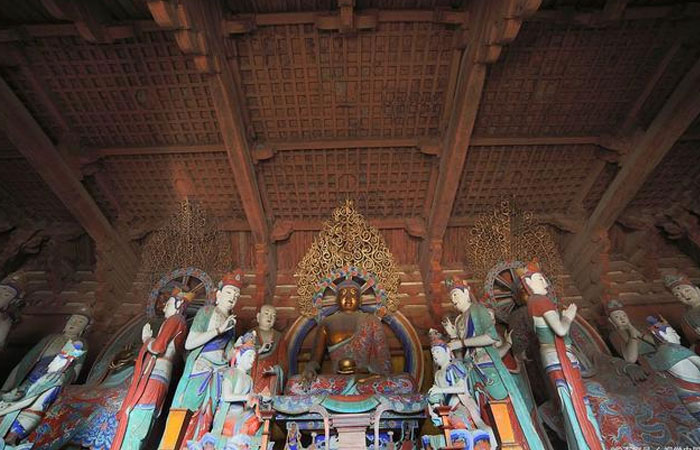
In the morning visit Yongle Palace (Palace of Eternal Joy in English), one of the largest Taoist temples from the 800-year-old Yuan dynasty. The temple was relocated to its present-site due the construction of Sanmenxia Reservoir in 1959. The restoration of it can be compared with it of Egypt’s Abu Simbel Temple. Yongle Palace preserves the 1000-square-meter mural of the Yuan dynasty kept in the perfect condition. It enjoys the fames of the “Oriental Art Gallery”. The murals are the master pieces in the history of world art and a valuable legacy of world culture. Then visit Guangrenwang Temple (also known as Wulong Temple), one of the very few buildings of the 8th century AD and one of the earliest constructions of ancient China. Continue your travel to Pujin Ferry and visit Yellow River Grand Iron Ox. These huge metal works used to tie the Tang dynasty pontoon bridge across the Yellow River. The tour here will provide a glimpse of bridge construction and transportation 1400 hundred years ago. Transfer to the train station for your departure.
Tailor Made Your Tours
If our sample tour programs cannot fit your particulars, please complete our easy-to-use customized tour request form for a customized tour solution. Our enthusiastic tour expert will promptly reply you in details within 24 hours.

